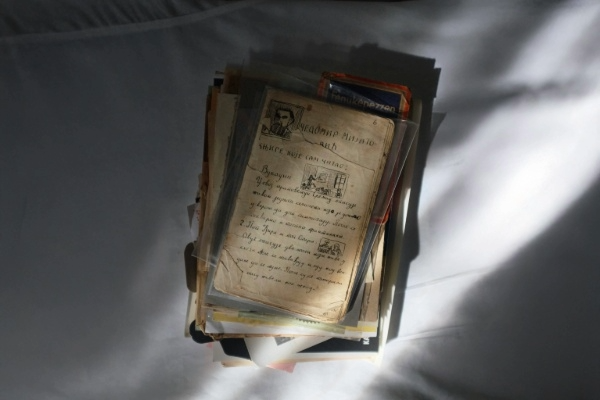
Not every historical artifact qualifies as a Historically Significant Item (HSI). Each item must undergo a rigorous, multi-step process involving third-party sourcing, authentication, appraisal, and nonprofit placement. HSIs typically include documents and artworks with meaningful research or cultural value, selected specifically because they enrich universities, museums, and legal nonprofit institutions.
This blog breaks down how items are chosen, what makes them significant, and why B10 Capital uses entirely independent third parties to ensure integrity and compliance at every stage.
Many people imagine “historically significant” as grand artifacts; emblems of political movements, ancient art, or museum-ready manuscripts.
But in practice, historically significant items are often documents, artworks, and cultural materials that have the potential to advance research, education, and public understanding.
At B10 Capital, the primary focus today is on two categories:
These may include:
These items often illuminate a moment in time, a cultural movement, or a significant figure's thought process, making them valuable for university archives, historians, researchers, and students.
Not commercial “collectibles,” but artworks that:
These pieces are selected specifically for their academic value, not for trend-driven market appeal.
Together, these two categories create a strong foundation for meaningful, mission-aligned charitable placement.
B10 Capital does not source, authenticate, or appraise items.
Instead, every step is handled by independent third-party professionals to ensure transparency, integrity, and impartiality.
These specialists include:
These individuals work on the front lines with cultural institutions, often identifying:
This ensures the HSI program supports the real needs of educational and cultural organizations, rather than simply placing items for tax purposes.
Once an item is identified by sourcing specialists, it undergoes authentication before any appraisal occurs.
This includes:
Every item must come with a traceable ownership history, such as:
Specialists familiar with the era, creator, or medium review each item for authenticity.
Items must demonstrate clear and verifiable relevance for educational, cultural, or artistic research.
The goal is simple: ensure each item is authentic, meaningful, and mission-aligned.
After authentication, items are evaluated by completely separate, third-party appraisers with no connection to the sourcing professionals.
These appraisers:
These appraisers operate at the highest industry standard and acknowledge in writing that:
They bear responsibility if the appraisal is ever determined to be intentionally false or materially flawed.
This creates an extra layer of security, objectivity, and defensibility.
An HSI isn’t just donated anywhere; it must go to a verified nonprofit whose mission aligns with the item.
These institutions typically include:
B10 Capital works only with organizations that:
Importantly, institutional placement is identified prior to final sourcing.
This ensures:
This alignment is what makes HSIs so defensible, valuable, and impactful.
To prevent misconceptions, here’s what historically significant items are not:
Each HSI must have verifiable historical, cultural, or academic importance, and a nonprofit institution ready to preserve or utilize it.
The entire HSI process is intentionally structured using independent third-party professionals to protect donors and ensure full compliance:
This structure prevents conflicts of interest, ensures clean documentation, and protects the integrity of the charitable deduction.
It’s also what makes HSIs one of the most defensible charitable contribution strategies available today.
For clients, this multi-step verification process creates:
Every stage (identification, authentication, appraisal, placement) is performed by different experts.
The documentation is comprehensive, audit-ready, and grounded in IRS regulations for charitable contributions of property.
The items become part of universities and institutions where they support education, research, and preservation.
Instead of a transactional donation, donors contribute something that enriches public understanding and cultural memory.
What makes an item “historically significant” is not trendiness or market hype.
It’s research value, cultural relevance, educational purpose, and authenticity.
The HSI strategy works because every item goes through the same disciplined pathway:
The result is a charitable contribution that is:
If you’re interested in contributing to education, preservation, and cultural impact, while also benefiting from an IRS-compliant charitable strategy, an HSI may be the right fit.
Contact B10 Capital today to explore HSI opportunities and learn how this strategy can support both your tax planning and your legacy.
Insights into sophisticated tax benefits designed for high-net-worth individuals and businesses.